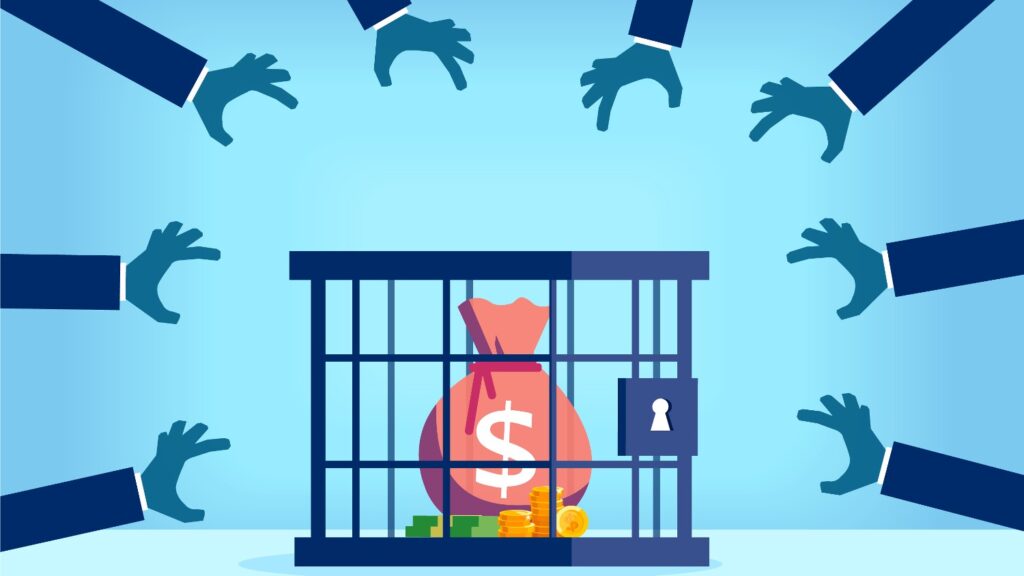Everything You Wanted To Know About Reserves, 2023
Some Owners have asked for clarification about how the HOA spends money, specifically on the big items called “Reserves.” This post will attempt to do that:
Operating Budgets and Reserves Spending Defined
 Anyone who has run a household budget knows that spending can be thought of in two major categories.
Anyone who has run a household budget knows that spending can be thought of in two major categories.
- The day-to-day, mostly predictable, operating expenses like food, transportation, entertainment, clothing, household stuff, etc. AND
- The major items that are only needed once every X years --- like replacing or overhauling a shingled roof … or buying a new car to replace the old one.
Let’s call the first category “spending from an OPERATING BUDGET” and the second category “spending from RESERVES.”
Most families handle their monthly OPERATING expenses in different, well-understood ways, such as using “household” checking accounts or credit cards.
On the other hand, families often pay for RESERVES expenses from their savings, although sometimes they borrow the money to make the purchase (e.g., buying a new car). Either way, they will then allocate money from their monthly OPERATING budget into either savings for future spending or loan repayments for past ones.
It’s the same here at the Las Mañanitas HOA: Every month we look at OPERATING expenses like payroll, supplies, utilities, etc. the same way most families or companies do -- namely, comparing actual spending with an OPERATING BUDGET. On the other hand, our spending from RESERVES comes from segregated bank accounts separate from our Operating bank accounts. Because we don't borrow money, our Reserves bank accounts are like savings accounts, and we put money into them every year. For this year, we will set aside $ 201,905 from our 2023 budget of $ 1,212,296 into our Reserves.[1]
Are Our Reserves Adequate?
As of December 31, 2022, our total RESERVES accounts will have balances just over $1 million. Is this enough? Is adding $ 201,905 this year enough?
In order to answer that question, we need to know what major items are coming – like the need to repaint the buildings. We’ll need to do that soon, and we know that it has to be done every 7 years or so. And there are other major needs coming, too.
The good news is that we don’t have a lot of “deferred maintenance” – which is a nice way realtors say that a property needs a lot of work. All our roofs are being “waterproofed” now and should be in good shape for many years to come. Over the past 4 years, David has replaced the iron gates with more expensive aluminum ones … which will last a lot longer. Every time we can buy a longer-lasting, higher quality good at a good price, we do that. It's not only consistent with our "high-end residential condominium" vision, but it's also fiscally prudent.
Things like driveway resurfacing and replacing palapas damaged by rot or storms are somewhat forecastable, and in April we will hire a CPA firm from California that specializes in independent Reserves Analyses for banks and HOAs. They will make a full report and recommendation for consideration at the November 2023 Assembly. I will circulate that when it becomes available. (Note: I can show interested parties a copy of a report they did for Las Mañanitas in 2016, which shows the impressive depth of their work.)
But how about major expenses that are not forecast-able? Our buildings are 20 years old and some systems might fail unpredictably. For example:
- Perhaps a freshwater pipe breaks inside a wall or floor, and undetected seepage rusts the rebar and destroys major sections of the wall or floor slab.
- Maybe the insulation on electrical cables running from the CFE power pole to the Units’ breaker boxes deteriorates to the point where the wiring harness for an entire building needs to be replaced.
- Maybe the waste water pumps or the pipes between the buildings and the street corrode to the point where they need to be dug up and fully replaced.
This is the stuff that is expensive and will happen at some point. We just don’t know when … or how much it will cost. That’s why the Board wants the CPA firm’s thinking about how much we should have in our Reserves.
What’s the Boundary Between “Maintenance” (charged to the OPERATING budget) and RESERVES Spending?
When the HOA replaces burned-out bulbs in the hallways, that hits the Operating budget, along with the payroll for the Maintenance employee who makes the change. But when a step-down transformer that grooms electricity for the building is replaced, that is charged to Reserves (if we have to pay for it, and not CFE). What’s the boundary line? When does an expense hit the Operating Budget and when does it hit Reserves?
Here’s the Accounting convention that has been adopted and which is shown on Las Mañanitas' financial statements:
- Any labor that’s done by the HOA’s Maintenance employees, or any supplies or equipment purchased for a repair that is less than $100 USD, is charged to OPERATIONS.
- Any contract with a third-party vendor for maintenance work, or any supplies or equipment purchased for a repair that is more than $100 USD, is charged to RESERVES.
Note that this mostly affects financial reporting – it doesn’t ordinarily affect how much money Owners have to pay in HOA fees. Whether your dues are allocated to a Maintenance budget (and then spent) or to a Common Reserves account (and then spent) really doesn’t matter much, especially, as in this example, both the Maintenance budget and the Common Reserves spending[2] are allocated to all 106 owners.
The only time it would matter would be for spending that is exclusively related to one of the major buildings, e.g., the 2022 project to resurface the Phase II Roof. That expense was charged against the Phase II Reserves only, and only the Phase II Owners were affected.
How Is Reserves Spending Authorized?
Short Answer: It depends on whether it’s an emergency or not.
For non-emergency spending, like the roof-replacement projects done in 2022 (Phase II) and 2023 (Phase III), the Annual Assembly held in November 2021 approved that spending from Reserves.
For emergency spending, the HOA has unilateral authority. Why? Because the Annual Assembly named the HOA as the “Administrator” of the condominium regimes, and the Administrator is legally obligated and authorized by the Regime Declaration to maintain the core functions of the condominium. So, if the sewer pumps blow up, the HOA would replace them right away, regardless of whether that spending was specifically pre-approved by the Annual Assembly.
A Comment on Emergency Repairs, Ordinary Maintenance, Preventative Maintenance, Spare Parts and Warranties
Owners in Las Mañanitas are sophisticated homeowners. They deal with these concepts all the time in their personal lives, but let me be explicit:
- Owners understand ordinary maintenance like changing light bulbs that burn out or changing the batteries on their smoke alarms when the “low-battery” beep occurs. They often keep spare parts on hand, as needed.
- They sometimes have to deal with emergency repairs such as a leaking water heater. They don’t have a spare water heater on hand; so, they order it and wait … sometimes for a frustratingly long time!
- Most of them have learned to minimize emergency repairs by setting up preventative maintenance programs. For example, they arrange for the refrigerant level in their air conditioning system to be checked prior to the hot months so as to avoid an untimely breakdown during hot weather. They change the oil in their car to avoid breakdowns and extend the life of the engine.
- Warranties can be purchased as part of an emergency repair (e.g., that water heater might be replaced for free if it fails again within a year) or as part of a service contract like a “Roadside Assistance” policy that sends a tow truck if your car breaks down on the road or needs a jump-start.
Well, the HOA faces the exact same kinds of issues -- whether to buy a preventative maintenance contract, whether to hold critical spare parts for long-lead-time items, whether to buy extended warranties, etc. Let's look at some examples:
- We needed to buy a “rooter” (aka a “snake”) to unclog sewer pipes. We could buy one for a few hundred dollars that would last a couple of years or a slightly more expensive one with higher reliability and a longer warranty.
- We could buy a backup part for the old elevators -- one that fails infrequently but which is not stocked locally. The last time it failed, the elevator was out of service for a few weeks while the part was ordered and shipped through customs! (We decided to spend the money and stock the part ourselves as a sort of insurance against a recurrence of that unhappy situation.)
- The flat roof on the Phase III garage is leaking. For the past couple of years, the HOA has been patching the leaks and repairing the damage when leaks appear in the public part of the garage – namely, the open part in the middle of that building. Leaks that show only within the private garages are undetected for long periods of time – when the garages are unused and Owners don’t see the damage in the ceilings. Addressing these leaks nowadays is a losing game of Whack-A-Mole, with the moles coming faster and faster. Not only is the private property of Owners inside their garages getting ruined more frequently, but the water coming thru the leaks seeps laterally into the concrete, rusting the rebar and weakening the overall structure. Prudence dictates that we resurface and “waterproof” the flat roof. It needs to be done, preferably sooner than later.
The contractor responding to our request for bid on this waterproofing work on the Phase III garage recommended that, while they are doing the work, they could add material to create a slight “pitch” to the roof so that water would tend to run off and not pool in the flat spots or minor dips in the roof. This would add a slight amount to the overall cost, but probably reduce the risk of water damage in the future. Depending on the cost, this is the sort of thing our HOA is inclined to do.
Armed with this background, I can now completely answer the question “How Is Reserves Spending Authorized?” When it’s an emergency, the HOA decides; that’s clear. When it’s not, the Owners decide at the Annual Assembly.
When the Phase III Garage roof is actively leaking, the HOA can spend the money without further Owner involvement. But, in order to do the resurfacing and waterproofing project, the Owners need to OK that spending at an Assembly. Now, at some point, when the leaking actively threatens the integrity of the building itself, the resurfacing/waterproofing work may become a true emergency, but that’s unlikely to happen with sophisticated Owners like ours making prudent, preventative-maintenance decisions in a timely way.
One Last Thing: What Is the Vigilance Committee's Role?
Prior to the Annual Assembly in November 2022, major projects like the Phase II Roof resurfacing were planned by the HOA Board and presented to the Owners at the Assembly for approval. A simple majority approved these major projects … which are chargeable to the Reserves.
Accordingly to the Regime Declaration, the Vigilance Committee has no legal authority to approve spending, either for ordinary operating expenses or Reserves spending. We are direct democracy (with ALL Owners voting), not a representative democracy (where the Vigilance Committee members might decide).
There were several major projects on the November meeting agenda that needed approval. But the President chairing the meeting mistakenly overlooked that agenda item, so no project approvals were legally authorized by the Owners.
On December 2, 2022, all three Vigilance Committees (from Phases I, II and III) and the HOA Board met in a joint session. Among other things, they discussed two of the most urgent projects – the elevators in Phase I (which are end-of-life and no longer supported), and the repair and resurfacing of the tennis court (whose post had been uprooted and whose surface was cracked.)
The tennis court issue was both modest ($8,000 USD) and qualified as an “emergency.” (It’s hard to play tennis without a net!) That was a short discussion.
Dealing with the elevators in Phase I was arguably an emergency issue, but it was sufficiently complex that it was presented for significant discussion by all the Vigilance Committee representatives, leading to further work by the HOA to perfect a proposal that the Phase I Vigilance Committee and the HOA Board then could unanimously support. That decision is outlined in detail in The Phase I Elevator Decision.
Preventative maintenance decisions are inherently difficult as all you homeowners know -- When do you repaint the house? The plumber says the leak in your kitchen (the second one in the last 18 months!) is caused by a corroded pipe. He recommends replacing the builder-grade pipes with new, long-lasting ones. Do you do it? Or do you keep repairing the leaks if/when they come? These are cost/benefit decisions that frankly take some research, judgment and some careful analysis.
Some such decisions are easy, like the tennis court resurfacing. Some are more difficult, like when to repaint the buildings. Prior to the time when it exposes the concrete to the salt, it’s not an emergency – it just looks unkempt. But can we get another year out of it?
Some Owners are planning to sell in the next couple years and have a short-term perspective. Some truly embrace the need “to secure a safe, sound, beautiful, comfortable community” and are willing to invest for long-term value. So making decisions as a group can be harder.
By having a broad cross-section of our Owners looking closely these subtle decisions will do two things of value. 1) It will lead to better, more thoughtful decisions, and 2) it will help build a consensus of support from all the Owners, who will realize that their views have been respectfully and fully considered. The HOA Board is only 4 people. The Vigilance Committees have 12 Owners serving on the Vigilance Committees.
This much I know: Most of our 106 Owners do not have the time or inclination to delve into the nuances of these decisions directly. They want to rely on the integrity and intelligence of the HOA Board at a minimum – and augmented by Owners on the Vigilance Committees if possible.
So, bottom line, the Vigilance Committee is advisory. It’s not legally required, ... but I find it extremely helpful. Because I forgot to get proper authority for major projects chargeable to RESERVES for 2023, I asked ALL Owners to agree that they will ratify Reserves spending that the HOA does without prior approval, provided that a supermajority of 75% of the Vigilance Committee members AND the HOA board support that decision.
As of February 15, 2023, the vote was 79-16 in favor of having the supermajority authorize spending. So we are good for this year, so far. Note: the only two projects approved so far ar the Phase I Elevators and the tennis court. The Vigilance Committee sent the other two projects (painting the roof tiles and overhauling the pools) back for further development of alternatives.
---------------
[1] Technically, we have seven separate Reserves Account – three for the main buildings (Phases I, II and III); three for the garage buildings (for Phases I, II and III) and one “Common Reserves” to pay for major Common Area items.
[2] The electrical Infrastucture feeding the buildings is defined as a common expense in the Cross-Sharing Agreement. Therefore, the “Common Reserves” account would be used.

